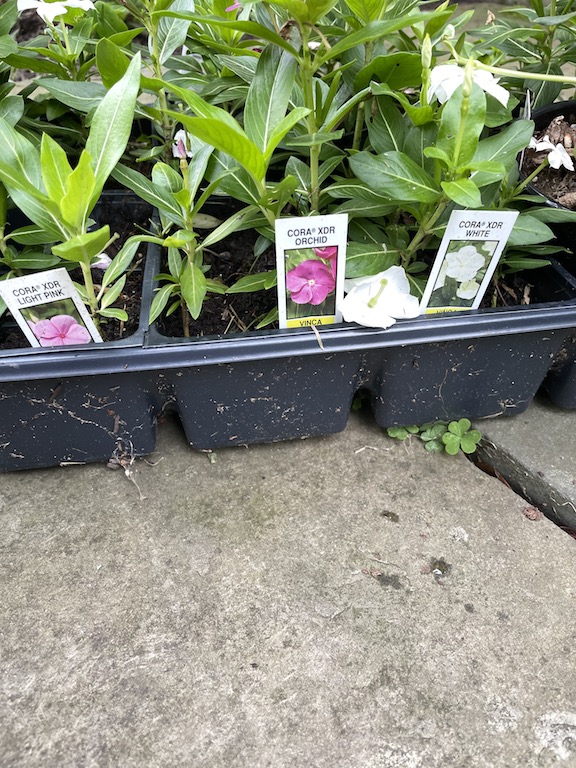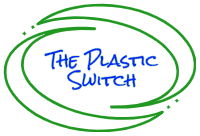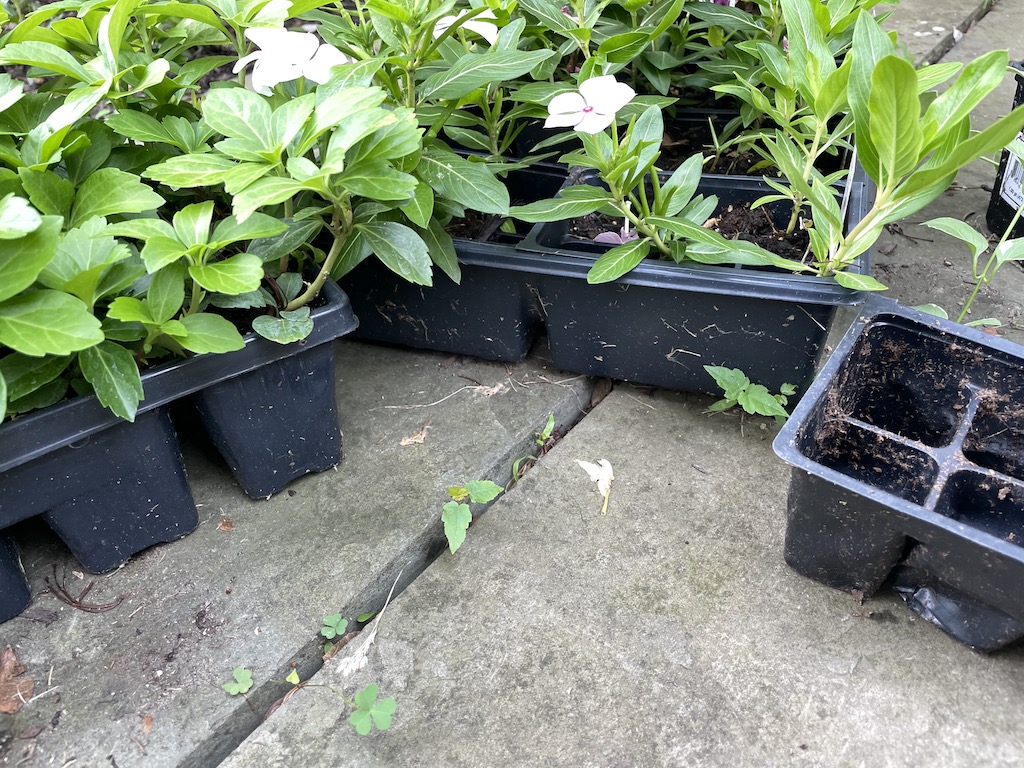FRUSTRATION FRIDAY
Every Friday I will have special posts that point out products or situations that frustrate me in my quest to go plastic-free. Many of these posts will be about products that use greenwashing–trying to look like sustainable, plastic-saving products but actually still using plastic, or trying to frame their plastic use in a misleading way.
I am not much of a gardener–I grew up in the city, and I don’t know much about plants. But when spring arrives, I do like to add some color around the outside of my house. So I run out to Lowe’s or the local garden center to pick up some annuals to plant in containers and hanging baskets. The big frustration? All of the plants come in plastic containers. And most of them are in black plastic, which is even worse since it is harder to recycle. There isn’t much choice–wherever I go all the plants are in plastic containers. And while some stores will take these back to be “recycled”, who knows what happens to them. We all know that only about 9% of plastic in the U.S. ends up getting recycled. Even the local farm that sells plants, uses plastic pots. And then, just to make it worse, they stick a plastic stick in each plant to let you know what kind of plant it is. Ugh!
What can we do?
This is a hard one!
Look For Plants In Plastic-Free Pots
Most of the time outdoor and indoor plants come in plastic pots. But very occasionally I have seen a few plants sold in “peat pots” made of pulp and plant fiber. A cool benefit of peat pots is that they are more convenient than plastic pots since they can be planted right in the ground. No need to try to pull the plant out of the pot without breaking the stem as you transplant it. These are a great plastic-free solution and it would be great if plants were available in them everywhere.
Another plastic-free solution is clay pots. While this isn’t a great solution when you are planting a lot of flowers, clay pots are great for larger plants and can be reused.
Grow Your Own Plants
I have a hard enough time just keeping plants alive, so actually bringing them to life would be a struggle. But I have a friend who starts many of her plants from seeds every year. Of course, you would want to do this in peat pots or clay pots. You need to plan ahead and have a place to grow them inside during the winter, so that they have a head start in the spring. If you are a plant lover, this could be a great solution.
Ceramic, Clay or Wood For Planters and Containers
We have lots of containers with flowers and herbs on our deck. It is tempting to buy plastic pots for these plants because they are lightweight and hard to break. But go with ceramic, clay or wood to avoid creating more demand for plastic.
Leave a comment below if you have other ways to avoid buying plants in plastic pots.


